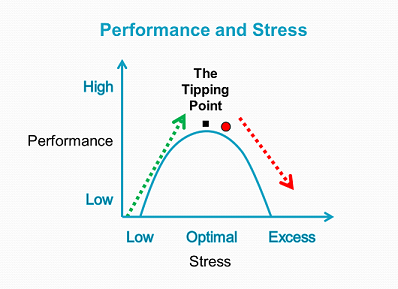When you walk in the room, who shows up for Read more →
Good Goals Gone Bad
Posted Tuesday, June 3, 2014Goals are powerful leadership tools that focus attention and effort. Good goals go bad when their power blinds us to critical information or strategic changes.
Good Goals
As a leader, goal setting is an essential part of your leadership toolbox. Like any tool, you have to use goals right:
Set SMART goals. Smart goals are specific, measurable, actionable, realistic and time-bound. Part of being realistic is making sure none of your employees have too many goals.
Coordinate goals. Use management by objectives to ensure goals are coordinated between people and organizations.
Provide metrics. Create goal-specific metrics to further shape and refine behavior.
If your goals are SMART, coordinated and backed by metrics, you will have a powerful leadership tool.
With great power comes great responsibility, for Spiderman and for leaders. The very power of goal setting can create problems. In my post on Got a Goal? Get A Metric! I used a photo of my power saws to illustrate the idea of goals as powerful tools.
My gloved hand is reaching for my zip saw in this picture. I love my zip saw – it is fun, powerful and fast. I also loved those gloves. Loved, because I no longer have those gloves. A day or so after David Slade took this picture, I got careless and touched the moving blade with my gloved hand. I was not injured, but the finger tip of one of my gloves was destroyed. Goals are like my zip saw – powerful, effective and potentially dangerous.
Goals Gone Bad
Here are two example of goals gone bad:
Counting Basketball Passes. Watch this video carefully and attempt to follow the directions. Done? Spoiler alert: If you haven’t watched the video yet, please do so. Most people are so focused on the goal of counting basketball passes that the gorilla goes unnoticed.
In an organization, people can get so busy meeting their goals that they miss the gorilla. A sales person gets focused on meeting their quota, and customer service goes south. A plant manager focuses intently on production and cost goals, and maintenance slips. A general manager focuses on the profit goal and doesn’t notice that employees are burning out. The gorilla – poor customer service, delayed maintenance or employee burnout – can destroy the organization, but leaders do not even notice the gorilla in the room because of their laser-like focus on meeting their goals.
Climbing Mount Everest. On May 11, 1996, a number of people were attempting to fulfill their goal of climbing Mount Everest. Climbers were intensely focused on reaching the summit. When the climbers faced delays on the ascent, they ignored declining oxygen supplies and a gathering storm to push through to meet their goal. Eight people died that day on Mount Everest. Jon Krakauer blamed a number of factors for the deaths, but one powerful factor was destructive goal pursuit. Individual climbers had planned and trained for years. Deciding to turn back would have meant giving up that cherished goal. The expedition companies competed with one another for clients. They also had an intense commitment to the goal of having clients summit Everest.
Relentless pursuit of business goals can lead to death. Auto companies pursuing low costs produce unsafe cars such as the Corvair, Pinto and Explorer. Construction companies taking short cuts on safety practices to meet project deadlines. Truckers fall asleep at the wheel attempting to make just-in-time delivery goals.
In most organizations, no one dies from relentless pursuit of goals. Instead, goal focus creates short term success and long term loss. The goals are met, but the organization alienates customers, employees or vendors.
Avoiding Goal Blindness
In both the basketball video and the fatal Everest climb, the power of the goal blinded participants to vital information. If goals are powerful, their power must be moderated. In other words, leaders are responsible for using goals wisely. Here are a couple of thoughts on how to limit the destructive power of goals:
Lead with principled moderation. As a leader, you need to be a rock in the storm. You have to take a principled stand. In my post on the leadership paradox of principled moderation, I suggest integrity and appropriate transparency as two non-negotiable leadership principles.
Take a look around. An antidote to the focusing power of goals is to shift your focus. Take your eyes off the goal at hand and look to the horizon. Encourage your people to do the same. Pause. Take a breath. Ask powerful questions: “Are we doing the right thing? How does this impact our customers? Employees? Community? Five years from now, will this still seem like a good idea?”
Resource properly. When people are tight on time, energy, supplies or people, they have to push harder to accomplish their goals. Pushing harder makes goal blindness more likely. The basketball video tricks most first time viewers because you have to really focus to get the count right. The Everest climbers had limited endurance and bottled oxygen to make the climb in a narrow window of time. A little more time, a few more supplies or an extra person can help you and your team avoid the tipping point of performance and avoid goal blindness.
Bottom line: Goals are powerful. Use them wisely and take precautions to avoid goal blindness. Then, you can keep your good goals from going bad.




Pingback: Spoiling Good Goals with Bad Metrics